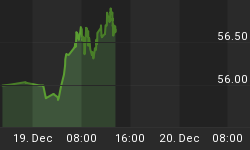"I measure what's going on, and I adapt to it. I try to get my ego out of the way. The market is smarter than I am so I bend." ~ Martin Zweig
Despite ones own confidence and intuitions, the very best any of us can hope for in markets as dynamic as these is the ability to adapt early enough to a potential pivot and position yourself accordingly for the next drive. Adapt or die - although the truth likely lies much closer to - adapt and thrive. It's as simple and as difficult as that. We've learned long ago, and as many weathered traders and participants have practiced, the wisdom of working confidently with a position while holding a number of opposing perspectives in your head at the same time. This has aptly been referred to as - strong opinions weakly held.
What we try to impress through our comparative work is the ability to both use them as intuitive guides within correlation trends, as well as a contrasting blueprint and mirror to where and when a market could potentially diverge. By utilizing both sides of perspective and adapting to current market conditions, we have arguably presented some of the more prescient independent research on the US dollar, euro, silver, gold and the CRB index over the past two years. Our method of comparative analysis typically does not just look at price itself - but the flow of momentum within a given pattern and the contrasts and congruencies it may impart towards future market expectations. In essence - what lies beneath. It is the appraisal of that potential energy which most interests us when placed in the context of current market conditions - e.g. sentiment, commitment and potential catalysts. We recognize it is by no means a guarantee, steeped in subjective reason and always a moving target to assess. In this sense, and one that we enjoy - it's an art form of puzzle pieces and perspectives.
Back in January and December of last year, we had focused our opinion that the USDX was becoming discretely built with upside momentum - despite the euro's considerable strength. This was most evident in the large positive divergence in momentum relative to price. Coupled with our work in the precious metals sector which pointed towards significant weakness on the horizon through the first half of the year, our comparative profile of the dollar's previous breakout and the saturation of euro bulls through January - we strongly felt the USDX was becoming primed for a reversal.
Fast forward to today, our concerns with the possible exhaustion in the US dollar index appears to be well founded. While we have incorporated the previous secular pivot of the USDX in our weekly notes, over the past several weeks we highlighted the diverging momentum signatures of the pattern with audible caution towards exhaustion. The bottom line - we felt that the dollar should have gained more cumulative momentum during the upside pivot and build in expectations that led to its false breakout. At this point it's early to speculate how significant the downside reversal in the USDX will be and its kinetic impacts on sectors such as precious metals and commodities in general. Having said that, it had a clear opportunity to extend itself away from the technical break - but failed quite dramatically. In our opinion, and now coupled with our work in the precious metals sector which point towards an upside reversal, positive divergences in momentum in the euro, and the record net USD long commitments - we like the flip side of the coin.
* All stock chart data originally sourced and courtesy of www.stockcharts.com
* Subsequent overlays and renderings completed by Market Anthropology


















